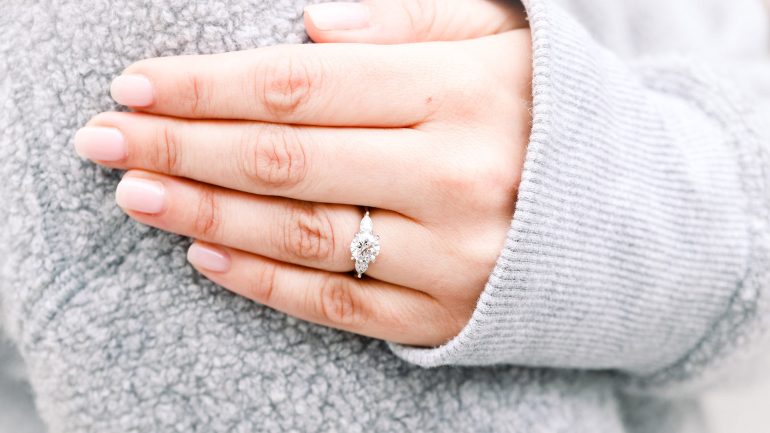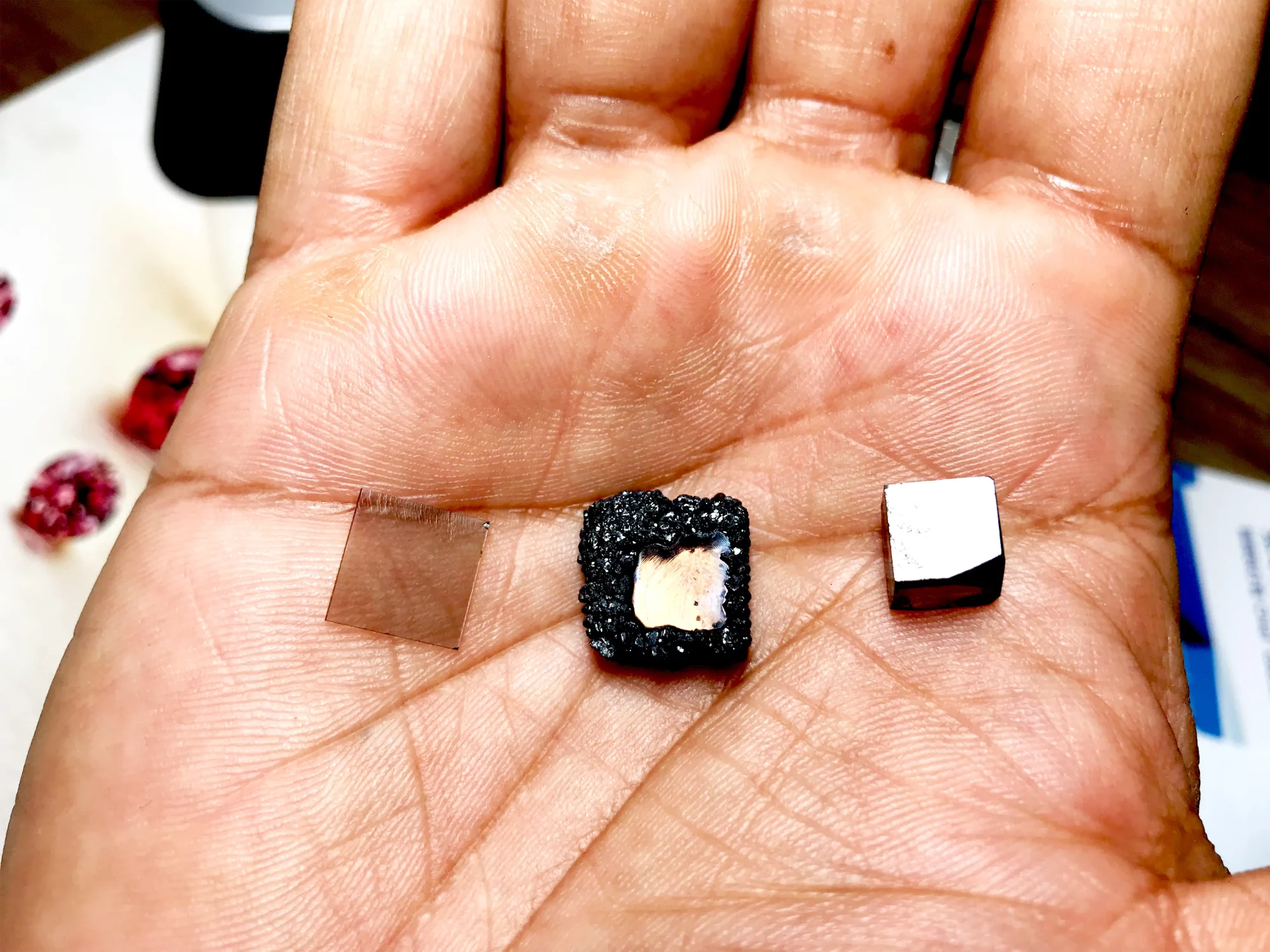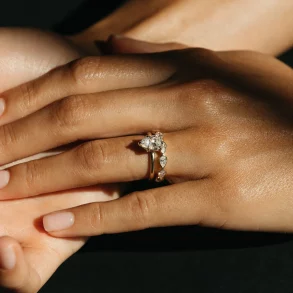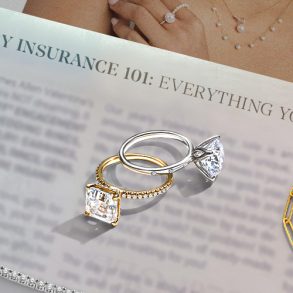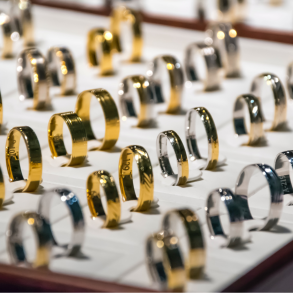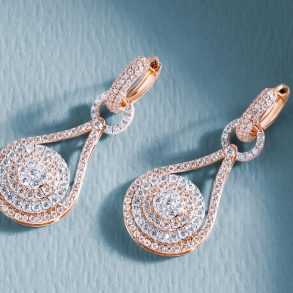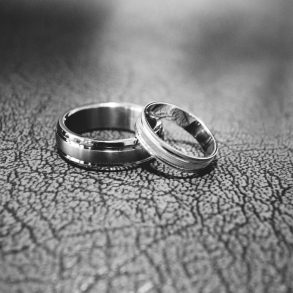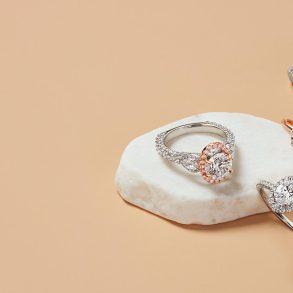In recent years, the engagement ring landscape has shifted as more couples explore the world of lab-grown diamonds which offer a unique alternative to natural diamonds.
While both lab-grown and natural diamonds bring exceptional beauty to any engagement ring.
With engagement rings ranging from hundreds to thousands of dollars or even more, the world of artificially created diamonds has created questions for buyers and understanding the differences between the two options are crucial to making the right choice for your values, budget, and style.
What is a Diamond Anyway? Lab-Grown vs. Natural
Let’s go back to grade school science.
A diamond is a naturally occurring, crystalline form of carbon that is created under an intense amount of heat and pressure deep inside the Earth. The carbon material has been compressed so much that it has a unique structure which makes it the hardest known natural material known to man.
Combined with its ability to refract and shine light, diamonds are iconic for the brilliance that they bring which makes them one of the most sought-after gems for jewelry such as engagement rings.
Natural diamonds have been around for decades, with popular slogans such as “diamonds are a girl’s best friend” so it’s not surprising to see that they’re a staple in the wedding jewelry industry.
What’s the difference?
As you’ve likely seen, lab-grown diamonds have exploded in popularity in recent years. These gems are created in laboratories using technological processes that replicate natural conditions of high pressure, resulting in a product that is both chemically and physically identical to mined diamonds and virtually indistinguishable to the naked eye.
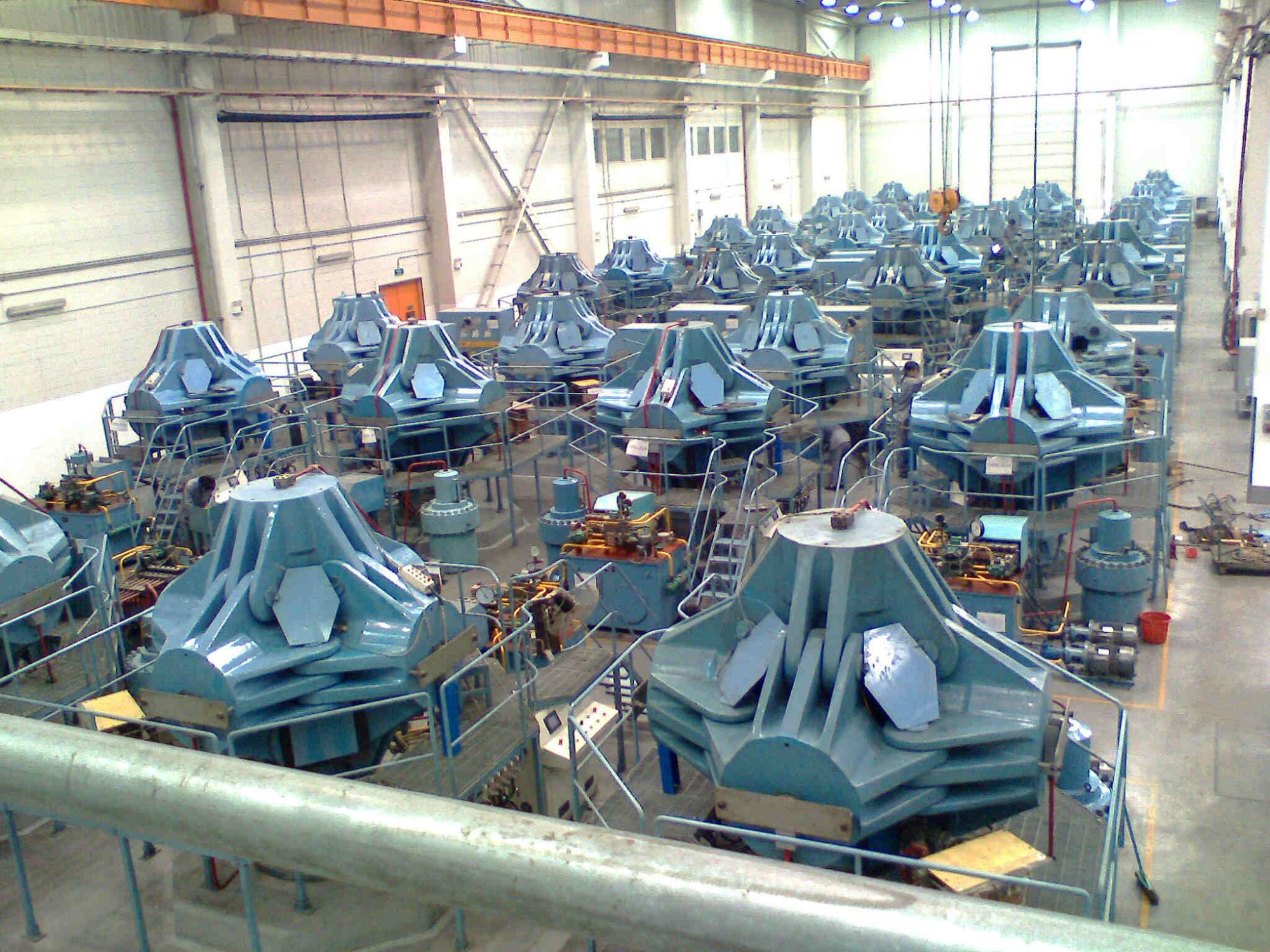
Natural diamonds, on the other hand, are formed over billions of years, crafted deep within the Earth’s crust. Their journey is long and hard (no pun intended) which contribute to their value and allure.
From a grading perspective, both types of diamonds are graded for the 4 Cs—cut, clarity, carat, and color—meaning you can find a stunning variety in either category.
Cost Comparison
So here’s the kicker: natural diamonds are incredibly expensive, so cost is a primary factor when choosing between lab-grown and natural diamonds.
On average, lab-grown diamonds can be anywhere between 20 to 40% less expensive than their natural counterparts, with estimates even going up to 60 to 80%! This affordability is a major reason why they’ve continue to increase in popularity, allowing couples to choose a larger carat size or higher quality within the same budget, maximizing the best of both worlds.
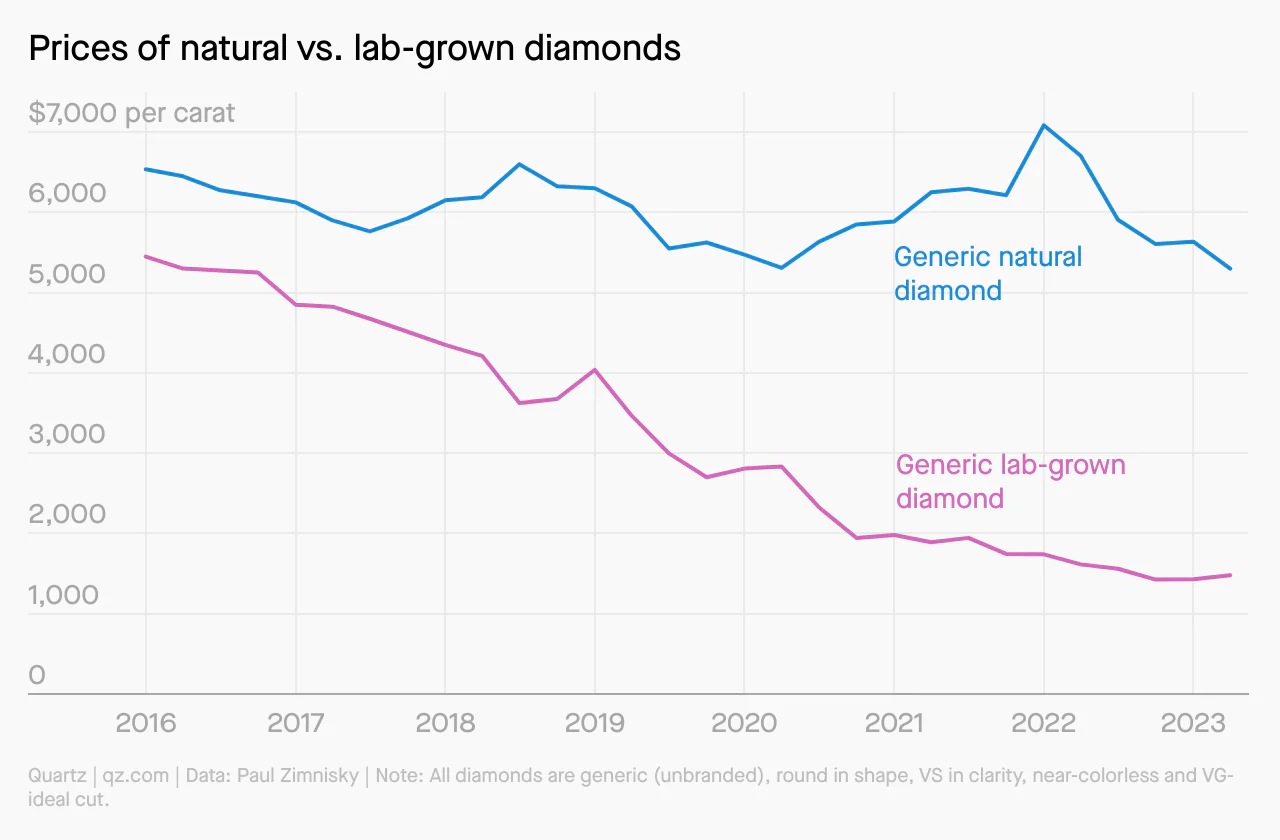
When you’re comparing the price of your purchase, consider looking at specific examples based on set parameters for carat, clarity, and cut. You’ll see difference in savings. For instance, a 1-carat lab-grown diamond may cost significantly less than a 1-carat natural diamond of similar quality, giving couples more flexibility to personalize their ring without compromising on sparkle or clarity.
Of course, retailers all have different markups, and there are online vendors who may be able to offer lower prices without the overhead of a storefront.
Environmental Impact and Ethical Considerations
Moving past cost, another reason they’re gaining traction is because buyers are more eco-conscious and look for ethical sustainability in recent years.
Ethical concerns are important to many buyers today, and lab-grown diamonds offer a clear advantage for eco-conscious couples. Lab-grown diamonds eliminate the need for mining which in turn reduces environmental impact and and preserves natural ecosystems.
These diamonds are conflict-free, so they don’t come with the complexities associated with exploitative mining and the abuse of workers in poor countries.
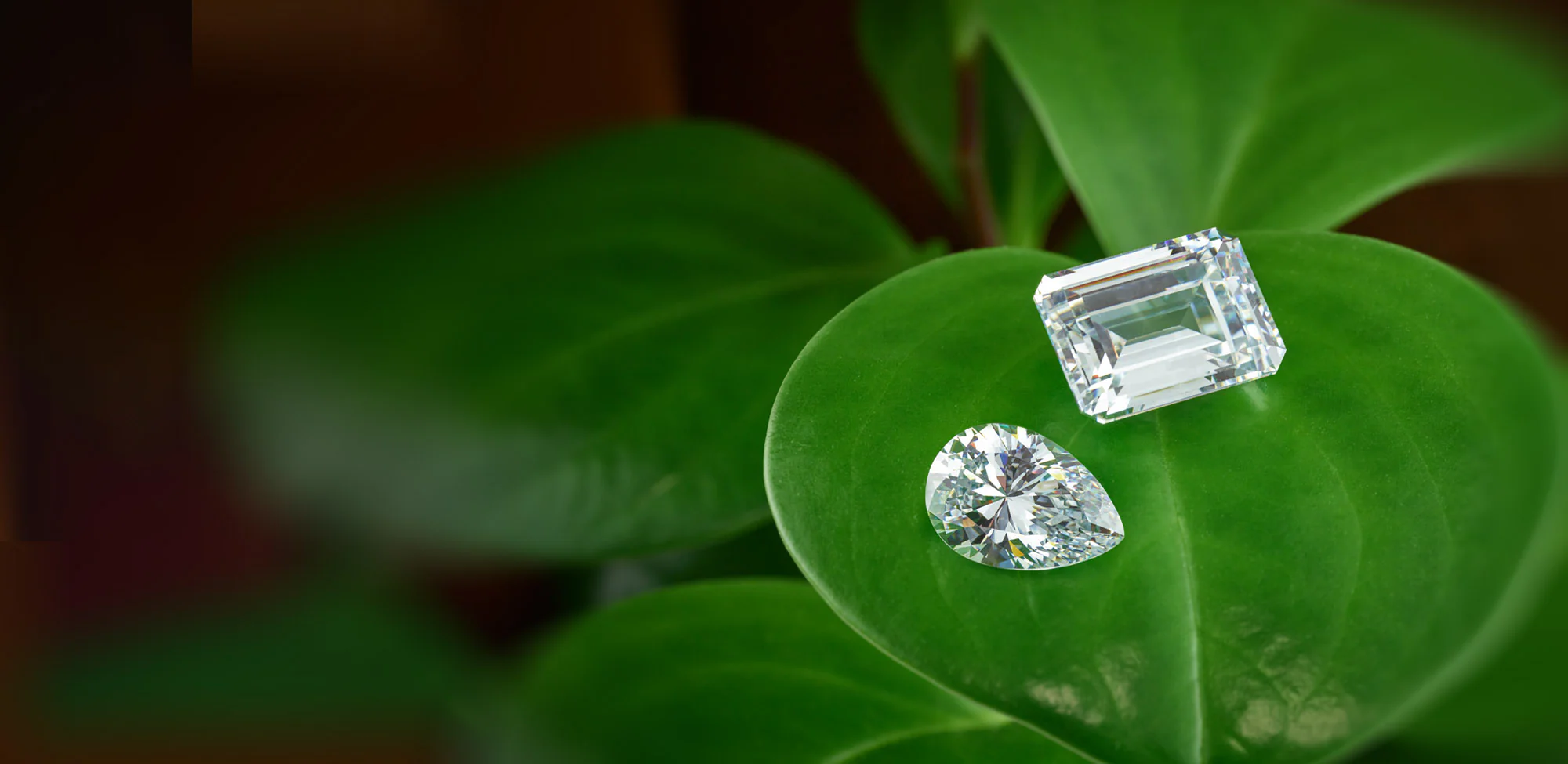
Natural diamonds have faced much criticism in the past decades due to unethical practices and the potential for “blood diamonds” to enter the market. Choosing a lab-grown diamond is a straightforward way to guarantee your ring’s origins align with your values.
Quality and Aesthetic Differences
While lab-grown and natural diamonds share identical chemical and physical compositions, experts can still tell which ones are natural through several different ways, one of which is by detecting naturally occurring nitrogen in the gem as lab-grown diamonds do not contain this element.
Sometimes perfection is too perfect, too. Lab-grown diamonds are often free from inclusions commonly found in natural diamonds, which means that the resulting gem displays exceptional clarity. However, these advanced lab processes also allow for customization of color and cut, providing buyers with a wide range of styles to suit their preferences.
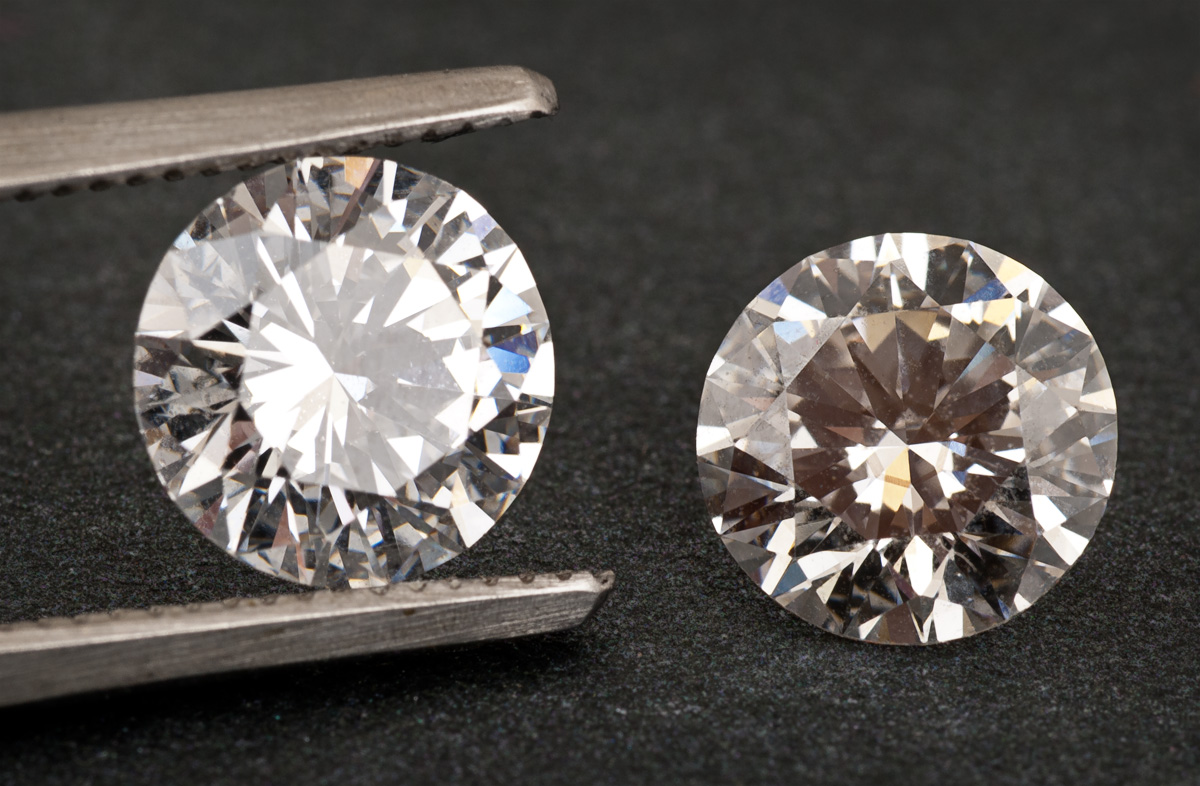
We think that both types of diamonds reflect light beautifully and when set in a well-designed engagement ring, both options exude sophistication and elegance.
Value, Sentiment, and Psychological Impact
Resale and Investment
No one expects to sell an engagement ring when they buy one. However, unforeseen circumstances can occur so one factor to consider is resale value. Natural diamonds have historically held their value better than lab-grown diamonds but with the advent of lab-grown options, this trend could shift over time.
The jewelry industry has attempted to create artificial scarcity in order to preserve the value of diamonds over the years, and have also marketed attempts at persuading buyers gems like moissanite aren’t worth as much.
Sentiment and Rarity
For those who value rarity, a natural diamond’s billion-year journey and its place in Earth’s history add a sentimental allure. Some people see natural diamonds as heirlooms and symbols of endurance, given their ancient origins and geological uniqueness. The only thing to consider is that if technology can create something even more perfect, is it better?
That’s rhetorical and only you can decide.
Modern Appeal of Lab-Grown Diamonds
Lastly, lab-grown diamonds offer a progressive and forward-thinking option that resonates with buyers who place sustainability and innovation in high regard. For them, lab-grown diamonds can symbolize a commitment to reducing their ecological footprint, and this is important to many couples.
Top Engagement Ring Styles Featuring Lab-Grown Diamonds
Lab-grown diamonds look exquisite in a wide array of ring settings. Here are some popular lab diamond rings designed by LabGrown, where they have over 2000+ designs for you to browse and find the perfect ring:
Round Brilliant Lab Grown Diamond Twisted Engagement Ring Setting
This elegant engagement ring features a twist design with 0.14ct of lab-grown diamonds in a graceful cathedral band. Choose your ideal center stone shape for a personal touch, with an optional matching band in a similar twist design. Available in 14k gold, 18k gold, or platinum for a timeless appeal.
Diamond Collar Emerald / Radiant Lab Grown Diamond Engagement Ring
This stunning ring showcases an emerald or radiant-cut lab-grown diamond center stone, embraced by a hidden halo and complemented by colorless diamond side stones. Available in 14k gold, 18k gold, or platinum, the 2.0mm band adds durability. Add a 0.46ct matching band for a complete bridal set.
Petite Round Brilliant Lab Grown Diamond Solitaire Ring
This petite lab-grown diamond solitaire ring exudes understated elegance with a 1.5mm band that highlights a brilliant round center stone in a 6-prong setting. Customize it in 14k gold, 18k gold, or platinum, with the option to add a curved matching band for a complete look.
Lab Grown Is Just As Gorgeous
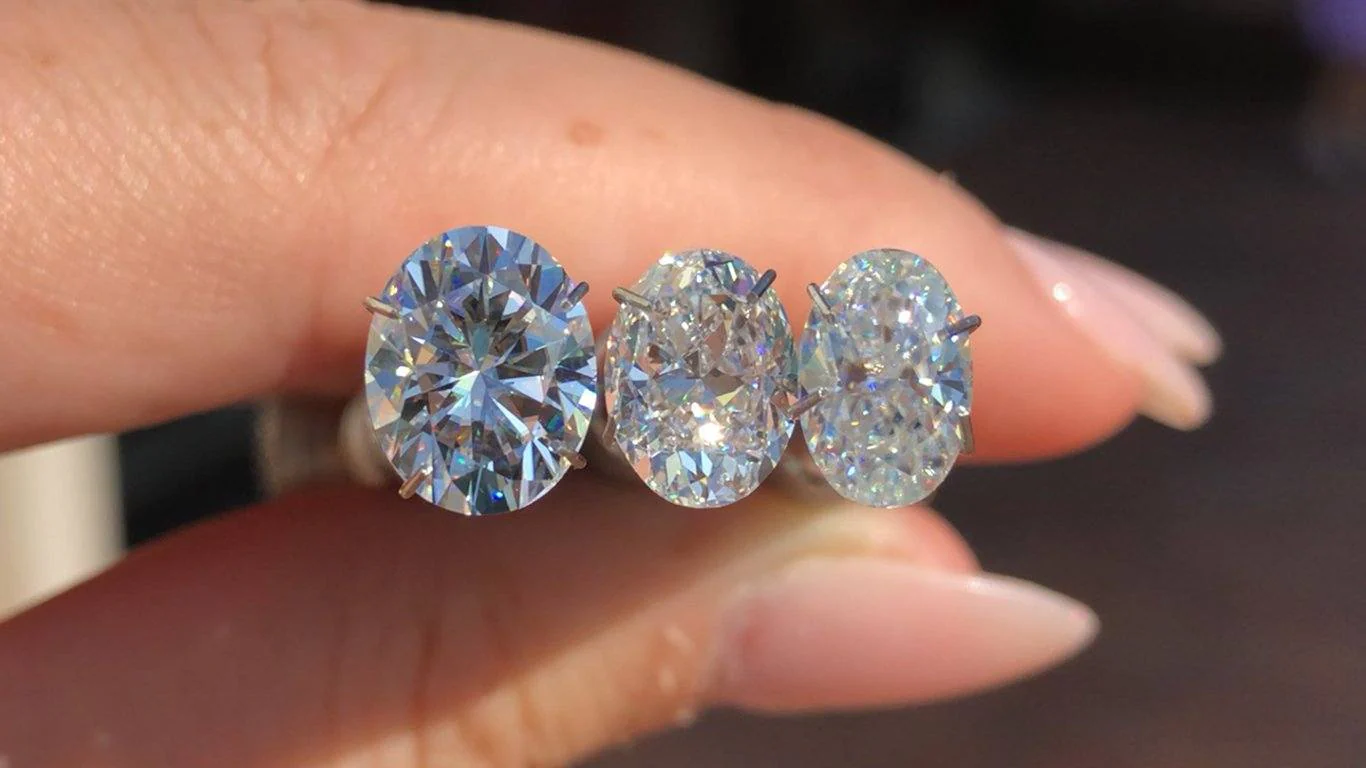
We’ve walked through some of the biggest considerations buyers should make when choosing between a lab-grown and a natural diamond
Whether it’s coming under a certain budget, prioritizing the history of a natural diamond, or the eco-friendly allure of a lab-grown stone, both choices offer beautiful ways to symbolize a lifelong commitment.
The important thing is that the best diamond ring reflects your unique style and values.

